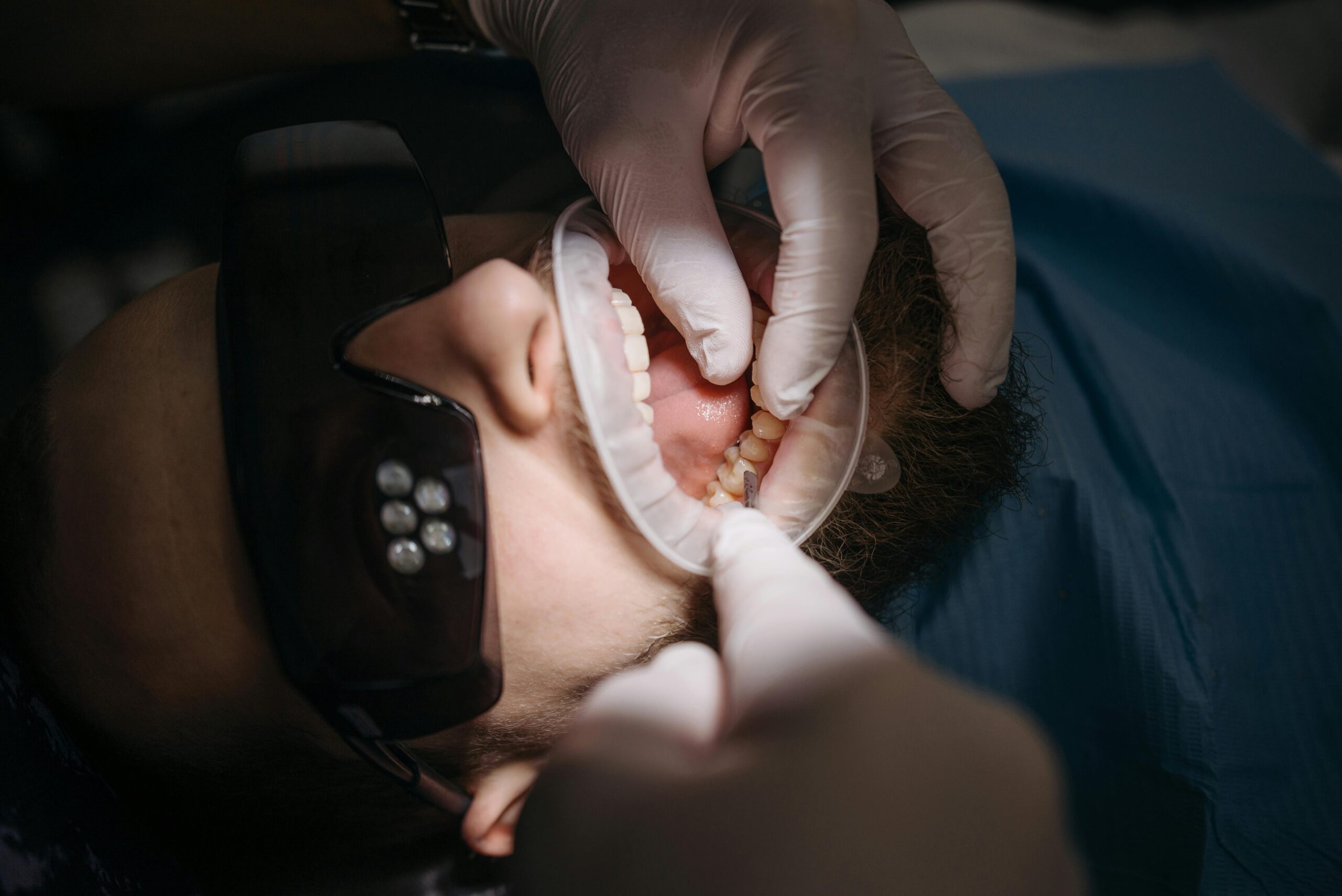Understanding Affordable Dental Implants
Affordable dental implants means choosing a plan that restores chewing and confidence while keeping total treatment costs reasonable. Affordability is not just a price; it’s the balance of safe care, durable materials, and results that last. Your total typically includes exams and imaging, the implant surgery, the post (abutment), the crown or denture, and follow-up care. Cost is a common concern for people considering implants, and clear conversations help match care to goals and budget [1].
What shapes the total investment and value:
- Number and location of implants needed for support.
- Bone and gum health (e.g., need for grafting or a sinus lift).
- Type of restoration: single crown, implant bridge, or denture stabilized by implants.
- Timing and complexity: same-day vs. staged treatment, extractions, and healing.
- Materials and lab work used to make the final teeth.
- Comfort options (like sedation) and the follow-up care plan.
Value also shows up in how implants perform over time. Many patients report better comfort, chewing, and satisfaction several years after implant therapy, reflecting strong function and quality of life when treatment is well planned and maintained [2]. Long-term care—good hygiene and regular checkups—helps protect your investment.
There are different ways to fit implants to your needs and budget. A single missing tooth may be replaced with one implant and a crown; several missing teeth might be restored with fewer implants that support a bridge or an implant-supported snap-in denture. Full-arch solutions can use a small number of implants to support a fixed set of teeth. Some patients use staged care and dental implant financing to spread costs over time while moving toward their final smile. Your dentist will map out options, timelines, and maintenance so you can choose what’s most practical for you.
Exploring Cheap Dental Implant Options
Looking for “cheap” implant solutions usually means finding smart ways to simplify treatment without cutting corners on safety. Options that use fewer implants, staged timelines, or adaptable materials can lower your total while still restoring function. The goal with affordable dental implants is value: teeth that chew well, feel comfortable, and are maintainable over time.
For a single missing tooth, one implant with a crown is often the most durable approach compared with removable options. When several teeth in a row are missing, two implants can sometimes support a bridge, reducing the number of implants needed. For a full arch, two to four implants can stabilize a removable “snap-in” denture, while four to six implants can support a fixed set of teeth; many patients consider fixed full-arch implants (All-on-4 style treatment) when they want a non-removable option with fewer implants.
Cost can also be managed by reusing an existing denture as a temporary while your implants heal, or by sequencing extractions, grafting, and placement over time. In some cases—especially if neighboring teeth already need crowns—a conventional bridge may be a practical alternative; explore our crowns and bridges options to understand how this compares with implant-supported care.
Be cautious with offers that seem far below typical ranges. Very low quotes may exclude key steps (imaging, abutments, or the final crown/denture), use unspecified lab materials, or provide little follow-up. Travel bargains can add hidden costs and make adjustments harder later. A clear, itemized plan, the clinician’s experience, appropriate 3D imaging, and a maintenance schedule help you compare options fairly.
Finally, remember that prevention protects your investment. Good home care and regular checkups reduce complications that add cost later. If you’re weighing timelines or budgeting, staged care and payment plans can make treatment more manageable without rushing choices. If you have questions about timing or visits, see our current hours.
Factors Influencing Implant Costs
Implant costs vary because every mouth and treatment plan is different. The total reflects the number of implants, the type of teeth being made (single crown, bridge, or denture), any preparatory procedures, and the time and materials involved. For affordable dental implants, the key is aligning clinical needs with a plan that restores function safely while managing each cost driver.
Foundation needs come first. If a site lacks bone or has sinus proximity, grafting or a sinus lift may be recommended before or during placement. Extractions, infection control, and whether implants are placed immediately or after healing also affect chair time and appointments. These steps help the implant integrate with bone, which supports long-term stability and reduces unplanned revisions later.
The restoration you choose shapes both process and price. A single implant with a crown involves one implant body and one custom abutment-crown set, while a span of missing teeth might be restored with fewer implants supporting a bridge. For full arches, choices range from implant-stabilized removable dentures to fixed bridges on four to six implants. Temporaries during healing, custom abutments, and material selections (for example, monolithic vs. layered ceramics) add laboratory work that influences the final fee.
Planning and precision also matter. Three-dimensional imaging, surgical guides, and digital impression workflows improve accuracy and can reduce complications, but they come with their own lab and technology costs. Comfort choices—local anesthesia alone versus adding sedation—change appointment length and staffing. If you’re anxious about treatment, explore our oral sedation options to understand how they fit into a phased plan.
Health and maintenance complete the picture. Smoking, uncontrolled diabetes, and gum inflammation can increase risks and may require extra visits or peri-implant care. Night guards for clenching, periodic hygiene around implants, and retentive component replacements (for implant-stabilized dentures) are part of long-term upkeep. A clear, itemized plan that outlines surgical steps, prosthetic phases, imaging, comfort measures, and follow-up helps you compare options apples-to-apples and choose a pathway that balances durability with value.
Types of Low Cost Implants Available
Low-cost implant plans focus on using the fewest implants and simpler parts while still restoring chewing and comfort. Common choices include a single implant for one missing tooth, a bridge supported by fewer implants, and dentures that “snap” onto two to four implants. In select cases, short or narrow implants can help avoid grafting. The right option depends on your bone, bite, smile goals, and how you want the teeth to feel day to day.
Single-tooth implants are often the simplest path when only one tooth is missing. You get one implant body, a connector (abutment), and a crown. When two or more teeth in a row are missing, two implants can sometimes support a multi-tooth bridge, which lowers the number of implants placed. This approach can reduce surgery time and lab parts while restoring a natural look and stable chewing.
Implant-stabilized dentures are a popular, budget-minded choice for a full arch. Two implants in the lower jaw can anchor a removable denture so it snaps in and resists movement, with four giving greater stability in many cases. These “snap-in” dentures are taken out for cleaning and usually need periodic replacement of small retentive inserts as part of normal maintenance. For those who want non-removable teeth, fixed full-arch bridges typically use four to six implants per arch, trading higher complexity for a more “teeth-like” feel.
Mini or narrow-diameter implants may help stabilize a denture when bone is thin and grafting is not planned. They use smaller posts and can be placed with less invasive surgery, but they are not ideal for every bite, especially where heavy forces or grinding are present. Short implants can also lower cost by avoiding sinus lifts or large grafts in the back jaw, when anatomy allows. Immediate approaches (placing an implant at the time of extraction, or placing a temporary tooth the same day) can cut visits, but require careful case selection to keep your affordable dental implants both stable and comfortable over time.
Budget Implants: Are They Worth It?
Budget implants can be worth it when the plan protects your health, restores chewing, and holds up over time. The key is value, not just a low sticker price. If a “deal” leaves out steps, uses unknown materials, or offers little follow‑up, any savings can disappear later with repairs or remakes.
Think in terms of total cost of ownership. Affordable dental implants should include careful planning, verified components, and a clear maintenance plan. Ultra‑low quotes sometimes exclude imaging, abutments, temporaries, or the final crown/denture. Travel bargains may add hidden costs and make adjustments harder. A written, itemized plan that explains each phase helps you compare fairly and spot what’s missing.
Longevity depends on case selection, bone health, bite forces, and hygiene. Over time, you may need normal upkeep like replacement of retentive inserts on snap‑in dentures, professional cleanings around implants, or a night guard if you clench. If you prefer extra comfort during longer visits, your sedation choice can also affect time and fees; learn how this fits your plan by exploring our deep sedation options.
Be cautious with “implant deals” that seem far below typical ranges. Ask who places the implant and who makes the final teeth, what brand and parts are used, and how complications are handled. Confirm that follow‑up care is available locally, and that the plan allows for adjustments as you heal. When these pieces are in place, budget implants can deliver solid function and confidence without overspending.
If timing or budget is tight right now, staged care can make costs more manageable without rushing choices. Temporary solutions can protect your smile while you heal or save for the next step. As an interim alternative for some cases, you can consider a well‑made partial denture while planning for implants. The bottom line: a transparent plan, appropriate materials, and a reachable team often matter more than the lowest price tag.
Dental Implant Financing Options Explained
Financing helps spread implant costs into manageable monthly payments, so treatment can start when you’re ready. Most patients combine a few tools: dental insurance for covered parts, a payment plan for the balance, and tax‑advantaged accounts like HSA or FSA. Your plan can also be phased (extractions, grafting, then implants and final teeth) to match your timeline and budget while keeping care safe and steady.
Insurance rarely pays for the implant itself, but it may help with related steps such as extractions, grafting, or the crown that attaches to the implant, depending on your policy. Annual maximums and waiting periods often apply, so a pre‑treatment estimate is useful to see what’s covered before you begin. Some people schedule phases across benefit years to use two annual maximums; your dentist can outline what is clinically reasonable to stage and what should be done together.
Payment plans can be in‑office or through a third‑party lender. They allow you to pay a portion up front and the rest over time. Look for clear terms that show total cost, length of the plan, estimated monthly payment, and any interest. Choosing a realistic monthly amount can make affordable dental implants more comfortable without rushing decisions or skipping needed steps.
Health Savings Accounts (HSA) and Flexible Spending Accounts (FSA) can be used for eligible dental care, including many implant services. HSAs roll over year to year; FSAs are typically “use it or lose it,” so timing matters. Keep itemized receipts and coordinate any insurance payments, since accounts usually require documentation that shows dates of service and what was patient‑paid.
Staged care is another practical approach. For example, you might remove unsalvageable teeth and place grafts now, use a well‑fitting temporary during healing, and place implants and final teeth after the site is ready. This protects long‑term results while spacing payments. The most important step is a transparent, itemized plan that lists imaging, surgery, parts (implant, abutment, crown or denture), temporaries, and follow‑up. With that roadmap, you can compare options, align financing to each phase, and move forward with confidence.
How to Find the Best Implant Deals
The best “implant deals” balance cost with safety, durability, and clear communication. Look for a complete plan rather than a teaser price. A good offer for affordable dental implants explains each step, who performs it, and what is included, so you can compare value—not just a number.
Start by asking for an itemized treatment outline. It should list exams and 3D imaging, the implant surgery, abutment, the final crown or denture, any temporaries, extractions or grafting if needed, and follow-up visits. Clarify what lab work is involved and whether parts are standard and readily available for maintenance later. If travel is part of a deal, consider the cost and logistics of adjustments, repairs, or emergencies after you return home.
Evaluate the planning process and clinician experience. Well-planned care uses appropriate diagnostics and sets realistic timelines for healing. Ask how your bite, gum health, and any risk factors (like grinding or smoking) are addressed. A thoughtful plan explains alternatives—such as using fewer implants to support a removable overdenture versus placing more implants for a fixed bridge—and why one path fits your goals and anatomy.
Compare what you are getting, not just what you are paying. Some quotes leave out essentials like abutments, the final restoration, or post‑op care. Others do not include adjustments or maintenance items that are part of normal upkeep. Clear expectations about temporaries, how many visits are needed, and how complications are handled help you avoid surprises. If comfort matters during longer appointments, discuss your anesthesia options and how they affect scheduling and cost.
Watch for red flags: offers far below typical ranges without a written breakdown, vague material descriptions, minimal diagnostics, or no plan for follow-up. If something is unclear, ask for clarification in writing. When two plans differ, compare them line by line so you see differences in steps, parts, and timelines. A second opinion can confirm you are comparing equivalent care. The best implant deals provide transparent details, dependable follow-up, and a path that fits your health, budget, and long‑term maintenance.
The Benefits of Affordable Teeth Implants
Affordable teeth implants can restore confident chewing, clear speech, and a natural look without overextending your budget. Because they anchor to the jawbone, implant-supported teeth feel secure and do not slip like conventional dentures. They also help protect nearby teeth and can be maintained with routine home care and checkups. When planned thoughtfully, affordable dental implants offer everyday comfort and long-term value.
Stability is the benefit most people notice first. Implant-supported crowns, bridges, or overdentures transfer biting forces to the bone, so food is easier to cut and grind. That means fewer sore spots from denture movement and less worry about teeth shifting during meals or conversations. Many patients report that their diet feels “less limited,” which supports better overall nutrition and confidence in social settings.
Implants also help preserve jawbone where teeth are missing. The titanium post stimulates the bone in that area, which can reduce the collapse that often follows tooth loss. This support helps maintain facial contours and the fit of your bite over time. While gum and bone still need routine care, the underlying support makes your new teeth feel more like your own.
Another plus: implants are typically “tooth-sparing.” A single implant replaces one missing tooth without grinding down healthy neighbors for a traditional bridge. Hygiene is familiar—brushing and flossing around a single implant crown feels like caring for a natural tooth. For implant bridges or snap-in dentures, your dentist will show you simple tools to clean under the restoration and keep the gums healthy.
Value shows in maintenance and flexibility. Components such as abutments, crowns, or the small inserts in snap-in dentures can be repaired or replaced as part of normal upkeep, often without disturbing the implant itself. Plans can be phased to match your timeline—starting with a few implants for a removable overdenture and, if appropriate later, moving toward a fixed bridge. With consistent home care and scheduled professional cleanings, implants aim to provide lasting function, comfort, and a smile that fits your life.
What to Expect During the Implant Process
The implant process moves in clear steps: plan, place the implant, heal, and attach the new tooth or teeth. Most people can expect one or two surgical visits with healing time in between, followed by appointments to make and fit the final crown, bridge, or denture. The exact timeline depends on your bone, bite, and whether other steps (like grafting) are needed, even when you choose affordable dental implants.
Planning starts with an exam, X‑rays, and often a 3D scan to map bone and nerves. Your health history, goals, and options are reviewed—single tooth, multi‑tooth bridge, or implant‑retained denture—and a phased plan is outlined so you know the sequence of visits. If a failing tooth is present, your dentist may plan an extraction and a temporary solution to keep your smile during healing.
On surgery day, the area is fully numbed; sedation can be added for comfort if appropriate. If needed, the tooth is removed and bone grafting may be placed to support the site. The implant is positioned in the bone and covered with a small healing part or a protective cap, and sutures are placed. Expect mild soreness and swelling for a few days; most patients manage well with rest, cold packs, and a soft diet while following the written home‑care instructions.
Healing (osseointegration) usually takes several weeks to a few months, depending on the site and any grafting. During this period, you’ll avoid heavy biting on the area. A temporary tooth, clear retainer, or adjusted denture can maintain appearance without pressing on the implant. In select cases, a same‑day temporary tooth is possible, but your team will guide what is safe for your situation.
After the implant has integrated, a small connector (abutment) is attached and impressions or a digital scan are taken to make your final teeth. You’ll return for try‑ins and then delivery, where the crown, bridge, or denture is secured and your bite is refined. You’ll also learn simple cleaning steps and schedule checkups. Long‑term care includes routine professional cleanings, home hygiene, and occasional maintenance items (like replacing retentive inserts on snap‑in dentures) to keep everything comfortable and secure.
Caring for Your Affordable Dental Implants
Caring for your implants is mostly about keeping the gums healthy and the parts clean and secure. A simple daily routine plus regular checkups helps your teeth look, feel, and function their best. Good care also reduces the chance of repairs later, protecting the value of your affordable dental implants.
Clean twice a day with a soft toothbrush and low‑abrasive toothpaste, focusing along the gumline where plaque collects. For a single implant crown, floss gently or use small interdental brushes to clean the sides of the implant. For bridges or full‑arch fixed teeth, use a floss threader, specialty floss, or a water flosser to reach under the bridge. If you notice bleeding, tender gums, or a sour taste, that can be a sign of inflammation—step up cleaning and contact your dental team for guidance.
If you have a snap‑in overdenture, remove it daily. Brush the denture with a non‑abrasive cleaner (not regular toothpaste), and gently clean the implant attachments and your gums with a soft brush. Soak the denture as directed and store it dry or in water per your instructions. Many people leave the denture out at night to let tissues rest. Expect that small retentive inserts will wear with use and be replaced at maintenance visits to keep the fit secure.
Right after placement, follow your written post‑op instructions: soft foods, no heavy biting on the area, and careful cleaning around (not on) the surgical site. Once healed, avoid biting hard items like ice or nutshells, and don’t use teeth to open packages. If you clench or grind, ask about a night guard to protect your new teeth. Avoid smoking and manage health conditions that affect healing and gum health.
Plan professional cleanings and checks on a regular schedule—often every 3–6 months, depending on your mouth and the type of restoration. At these visits, your team will clean around the implants with appropriate instruments, check bite contact, update X‑rays as needed, and replace worn parts like overdenture inserts. Call promptly if you feel looseness, see a chip or crack, or have persistent bleeding or swelling. Early attention keeps your implants comfortable, stable, and ready for everyday life.
Frequently Asked Questions
Here are quick answers to common questions people have about Affordable Dental Implants: Costs, Options, and Financing in Glendale, AZ.
- What factors influence the cost of dental implants?
The cost of dental implants can vary due to several factors. Key elements include the number of implants, type of restoration (like crowns or dentures), and any additional procedures such as bone grafting. Materials and technologies, such as 3D imaging or surgical guides, also play a role, affecting both precision and price. Health considerations like gum inflammation or smoking can add extra visits. A detailed plan helps balance these factors to align with your budget while ensuring safety and stability for the implants.
- What are the common options for affordable dental implant plans?
Affordable dental implant options typically aim to minimize the number of implants used. These can include a single implant with a crown for one missing tooth or a bridge supported by fewer implants for multiple missing teeth. For a full arch, two to four implants can stabilize a removable denture, while four to six implants can support a fixed bridge. The choice depends on your specific needs, bone health, and personal goals for function and comfort.
- Are budget dental implants a good long-term decision?
Budget dental implants can be worthwhile when planned well, focusing on value beyond just the price. This involves careful planning, verified components, and a outlined maintenance plan. Without these, initial savings might result in higher costs later due to repairs or adjustments. Ensure the plan includes all necessary steps, quality materials, and dependable follow-up care, which are vital for maintaining function and confidence over the long term.
- What are potential risks of choosing low-cost dental implant offers?
Choosing dental implants based solely on low costs can have risks. Exclusions, like imaging or the final restoration, might inflate costs later. Unknown materials or insufficient follow-up can lead to complications. Offers with very low quotes may lack important steps or result in higher repair expenses over time. A comprehensive, written plan outlining each phase, necessary components, and aftercare helps minimize these risks and ensures realistic comparison of options.
- How do dental implants benefit overall oral health?
Dental implants anchor to the jawbone, providing stability that feels more natural than conventional dentures. They support chewing and speech, protect remaining teeth, and help preserve the jawbone by stimulating it, which reduces bone loss. Implants help maintain facial structure and can be cleaned similarly to natural teeth. This comprehensive support contributes to a more balanced and healthier oral environment, improving both function and aesthetics significantly.
References
- [1] Awareness, attitudes and cost among patients for dental implants in teeth replacement. (2024) — PubMed:40092854 / DOI: 10.6026/9732063002001358
- [2] Patient-related outcome measures with implant therapy after 5 years. (2017) — PubMed:27335212 / DOI: 10.1111/clr.12862




